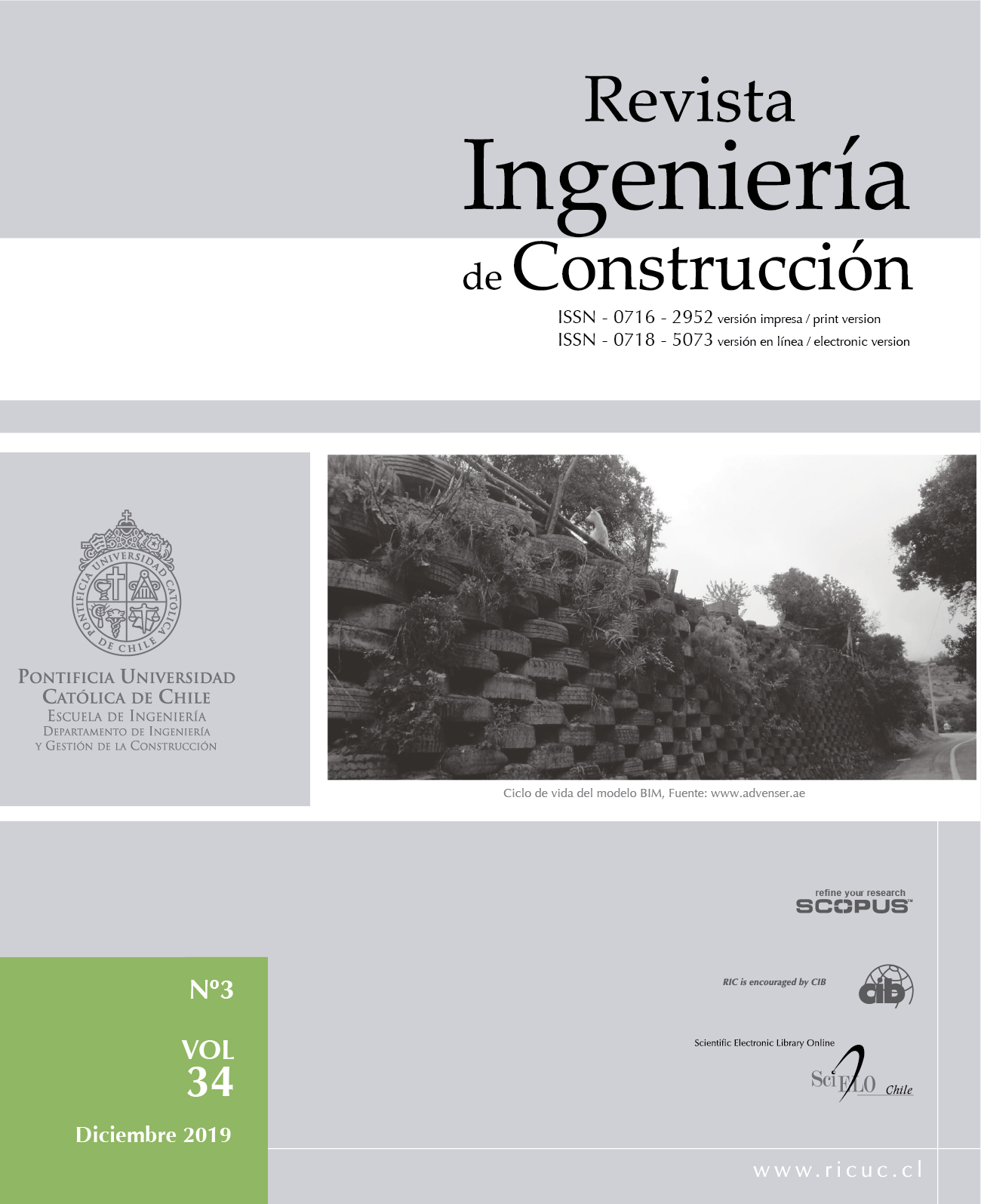Restoration of pavements: adherence between layers with geosynthetic interposition of different mesh opening
DOI:
https://doi.org/10.4067/S0718-50732019000300307Keywords:
Restoration, geosynthetic, reflection crack, pavement, reinforcementAbstract
Generally, a deteriorated concrete pavement is restored by a layer of asphalt reinforcement. Currently, an appropriate intervention consists of interposing a geosynthetic material to delay the growth of existing fissures in the old pavement towards the new upper layer. The dilemma raised is the adherence that is achieved between the layers of the old and new pavement by interposing a geosynthetic, because the effective operation of a pavement occurs when the layers that make it work together. Previous work experiences showed problems in the adhesion with the interposition of geosynthetics. Therefore, the study of the adhesion between a layer of Portland Cement Concrete and a layer of Conventional Asphalt Mixture is proposed, interposing a geogrid with different mesh opening, using as an adhesion agent an asphalt emulsion modified with polymer. It is found that the mesh opening geogrid that offers the best adhesion performance is that which has a mesh size of 40x40 mm. It is also observed that whatever the mesh size of the material, it generates a benefit compared to the system that does not consider the material, that is, to the intimate contact between concrete-asphalt by emulsion


